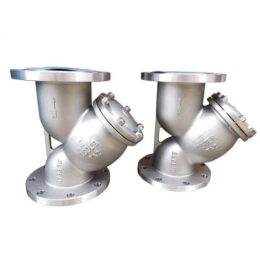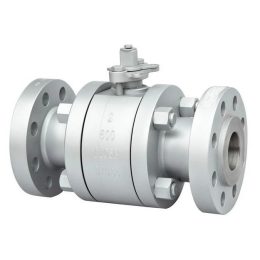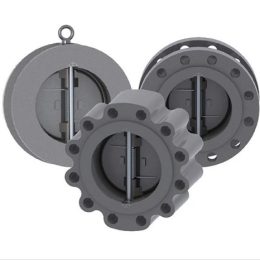A Lift Check Valve and Its Applications

A lift check valve is a type of non-return valve that prevents the backflow of media in piping systems. It is constructed using materials such as metal, plastic, or stainless steel and functions to stop media from backing up into the chamber. In this blog post, we will discuss the definition, applications, and benefits of a lift check valve, as well as its leading manufacturer of industrial valves.
Definition of a Lift Check Valve
A lift check valve is a non-return valve that permits fluid flow in one direction but prevents it from flowing backward. It is commonly used in water, gas, and steam applications to guarantee consistency of fluid direction. A lift check valve is an extremely reliable and versatile product, suitable for many applications. They have high-pressure capabilities and can withstand extreme temperatures without any leakage risk. Lift check valves can be made from either forged materials, casted materials, or plastic. Those manufactured with forged metals tend to be more durable than those cast. A lift check valve is installed in a pipe system using threads at both the outlet and port, increasing its strength while preventing fluid leakage. Furthermore, these valves are designed for ease of installation, replacement, and upkeep – making them an ideal choice for industrial plants.
Applications of a Lift Check Valve
A lift check valve is designed to prevent reverse flow from entering the process stream. It does this by raising up an internal disc or ball component that allows fluid passage only in one direction, then dropping back down when the flow changes direction. Lift check valves come in a variety of types and designs to suit a specific fluid service. Some are specifically designed for high-pressure applications where flow velocity must be kept high, such as air, gas, or steam services. A lift check valve is an automatic valve installed within a high-flow system to prevent backflow and cross-connection. It is commonly used in steam, air, gas, and water systems but may be found elsewhere as well. Its body is similar to that of a globe valve, except it features a disc and seat instead of the traditional stem and top works. When the flow stops or reverses, the disc drops into its designated seat for sealing purposes. These linearly stroking designs, similar to globe valves with metal or composition disks, often feature an equalizer pipe between them and downstream piping to increase disc opening in low flows. Furthermore, some incorporate springs above the disc, which provide extra closure force when it returns to its closed position.
Benefits of a Lift Check Valve
Lift check valves are often employed in piping systems with high turbulence levels, as well as those with low-pressure levels. They offer a number of benefits, including high-pressure capabilities, resistance to extreme temperatures, durability, and ease of installation, replacement, and upkeep. They are an ideal choice for industrial plants because of their ability to prevent backflow and cross-connection within a high-flow system. In addition, lift check valves can be customized to suit specific fluid services, making them a versatile solution for a wide range of applications.
Lift check valves are a type of non-return valve that play an important role in preventing backflow and cross-connection within a high-flow piping system. They are available in a variety of types and designs to suit specific fluid services, and offer a number of benefits including high-pressure capabilities, resistance to extreme temperatures, durability, and ease of installation, replacement, and upkeep. When selecting a lift check valve, it is important to choose a reputable manufacturer that offers quality products and excellent customer service.



